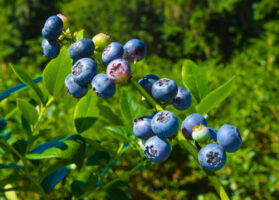Agronometrics in Charts: California Rains Leave a Bittersweet Taste for Strawberry Producers
In this installment of the ‘Agronometrics In Charts’ series, Sarah Ilyas studies the state of the California strawberry market. Each week the series looks at a different horticultural commodity, focusing on a specific origin or topic visualizing the market factors that are driving change.
2023 began with record precipitation and disastrous flooding throughout much of California. Parched watersheds soaked up the first rains, but soon became waterlogged. California strawberry farmers have suffered up to $200 million in damage from wind. The California Strawberry Commission reports that an estimated 350 acres have been lost to erosion, and another 1,490 acres await the receding of flood waters. The areas that were hit the hardest include Santa Cruz & North Monterey Counties (Pajaro River) – 573 acres, Monterey County (Salinas River) – 467 acres, Santa Barbara & San Luis Obispo Counties (Santa Maria River) – 500 acres and Ventura County – 300 acres.
According to the weekly weather and crop bulletin published by the U.S. Department of Agriculture’s National Agricultural Statistics Service and World Agricultural Outlook Board, for California’s farming communities, the bounteous wet season portended more favorable water allocations for 2023, albeit with complications related to lingering standing water and infrastructural damage to levees, roads, and farm buildings and equipment. The rain was a welcome reprieve from the drought for the majority of the 31,852 acres of California strawberry fields that sustained minimal damage.
“We were fortunate these storms came at a time when most farms are dormant and thus farm worker jobs have had minimal impact,” said Rick Tomlinson, President of the California Strawberry Commission. Despite the havoc wreaked, the Strawberry Commission claimed that most farmers warmly welcomed the rain owing to its ability to improve plant health. Tomlinson went on to add, “As soon as we get a few weeks of sun, the strawberry plants should recover in time to start harvest in the spring. With improved soil health from the rains, we should have a good season.”

Source: USDA Market News via Agronometrics.
(Agronometrics users can view this chart with live updates here)

Source: USDA Market News via Agronometrics.
(Agronometrics users can view this chart with live updates here)
Due to the torrential rains, demand may exceed supply across California’s growing regions. This might make for tighter supplies in Florida and South Texas as these regions help to alleviate California’s shortages. Spikes in pricing could be expected due to probable quality difficulties caused by lengthier transit times.

Source: USDA Market News via Agronometrics.
(Agronometrics users can view this chart with live updates here)
Written by: Sarah Ilyas






